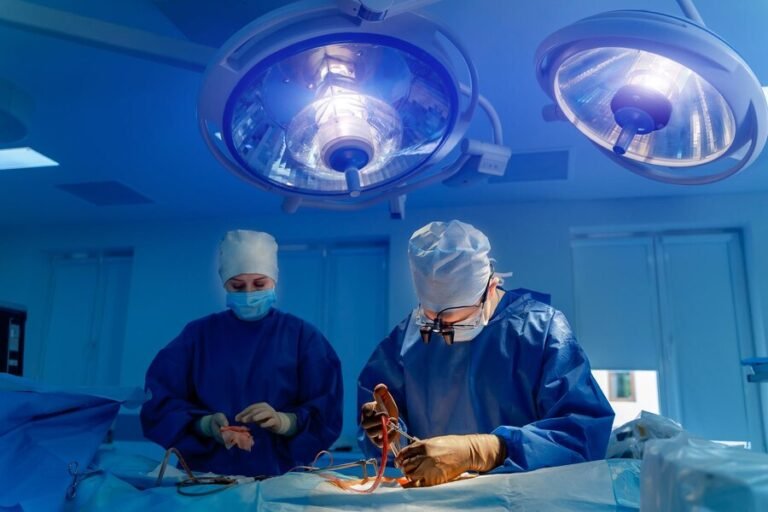Current Challenges And Future Directions In Robotic Surgery
Robotic surgery has emerged as a transformative force in modern healthcare, offering unparalleled precision, flexibility, and enhanced patient outcomes. However, like any burgeoning field, it faces a series of challenges that must be addressed to unlock its full potential. From technological limitations to regulatory hurdles, these obstacles present opportunities for innovation and advancement. In this article, we will explore the current challenges facing robotic surgery and examine the potential future directions that could shape its evolution.
To Know More About It Please Click Here
Current Challenges
- Cost and Accessibility: One of the primary challenges hindering the widespread adoption of robotic surgery is its high initial cost and ongoing maintenance expenses. Many healthcare facilities, especially those in resource-limited settings, struggle to justify the investment required to procure and maintain robotic systems. Additionally, disparities in access to robotic surgery exist between different regions and healthcare systems, limiting its benefits to select populations.
- Technological Limitations: While robotic surgical systems offer unparalleled precision and dexterity, they still have limitations. These include restricted range of motion, lack of haptic feedback, and dependence on skilled operators. Overcoming these limitations is crucial for expanding the scope of procedures that can be performed robotically and improving patient outcomes.
- Training and Education: Training surgeons to proficiently use robotic systems is a time-consuming and resource-intensive process. The learning curve for mastering robotic surgery can be steep, requiring extensive practice and mentorship. Moreover, the availability of standardized training programs varies widely, leading to discrepancies in skill levels among robotic surgeons.
- Regulatory Frameworks: Regulatory agencies face the challenge of keeping pace with the rapid advancements in robotic surgery. Ensuring patient safety while promoting innovation requires a delicate balance. Striking the right balance between oversight and facilitating technological progress is essential for fostering the continued development and adoption of robotic surgical techniques.
- Ethical and Legal Considerations: As robotic surgery becomes more prevalent, ethical and legal questions surrounding patient consent, liability, and data privacy come to the forefront. Safeguarding patient rights and ensuring transparency in robotic surgery practices are critical for maintaining public trust and confidence in this evolving field.
Future Directions
- Technological Advancements: Continued research and development efforts aim to overcome current technological limitations in robotic surgery. Innovations such as enhanced imaging capabilities, augmented reality visualization, and miniaturized robotic instruments hold promise for expanding the applications of robotic surgery and improving patient outcomes.
- Cost Reduction Strategies: Efforts to reduce the cost of robotic surgery systems and associated consumables are underway. This includes the development of modular robotic platforms, as well as initiatives to streamline manufacturing processes and negotiate pricing with vendors. Making robotic surgery more affordable and accessible will broaden its impact and reach.
- Standardized Training Programs: Establishing standardized training programs and certification requirements for robotic surgeons is essential for ensuring competency and safety. Collaborative efforts between industry stakeholders, medical societies, and educational institutions can help develop comprehensive training curricula and accreditation frameworks.
- Integration of Artificial Intelligence (AI): The integration of artificial intelligence algorithms into robotic surgical systems has the potential to revolutionize surgical care. AI-powered assistance can enhance decision-making, automate routine tasks, and improve surgical outcomes through real-time data analysis and predictive modeling.
- Global Collaboration and Knowledge Sharing: Facilitating collaboration and knowledge sharing among robotic surgery practitioners worldwide is crucial for advancing the field. Initiatives such as international conferences, research consortia, and online platforms for information exchange can foster innovation and best practices dissemination.
In conclusion
while robotic surgery faces several challenges, it also holds immense promise for the future of healthcare. Addressing these challenges requires a concerted effort from stakeholders across the healthcare ecosystem, including clinicians, researchers, policymakers, and industry partners. By overcoming barriers to adoption, fostering innovation, and ensuring patient safety, robotic surgery can continue to revolutionize surgical care and improve patient outcomes in the years to come.
Also, Follow us on Instagram







